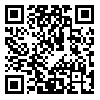Volume 15, Issue 5 (2024)
LRR 2024, 15(5): 257-281 |
Back to browse issues page
Download citation:
BibTeX | RIS | EndNote | Medlars | ProCite | Reference Manager | RefWorks
Send citation to:



BibTeX | RIS | EndNote | Medlars | ProCite | Reference Manager | RefWorks
Send citation to:
Ebn-Abbasi F, Nushi M. A Critical Discourse Analysis of Former Iranian President’s Speeches in the Time of Covid-19: The Case of Holy Sites Lockdown. LRR 2024; 15 (5) :257-281
URL: http://lrr.modares.ac.ir/article-14-60511-en.html
URL: http://lrr.modares.ac.ir/article-14-60511-en.html
1- Department of English Language and Literature, Shahid Beheshti University, Tehran, Iran , faramarz.abbasi14@gmail.com
2- Department of English Language and Literature, Shahid Beheshti University, Tehran, Iran
2- Department of English Language and Literature, Shahid Beheshti University, Tehran, Iran
Abstract: (2980 Views)
This study takes a critical look at the purposive manipulation of discourse and rhetoric by the former Iranian President — Hassan Rouhani — when announcing the lockdown of holy sites during the COVID-19 crisis. A discourse analysis with a qualitative design was applied to study the political dimension of the discourse. This study is framed within the domain of systemic functional linguistics mood systems and the classical Aristotelian rhetoric trio — logos, ethos, and pathos. The results revealed that Rouhani mainly used the declarative mood in his speeches which performed three main functions: statements of opinion, statements of fact, and indirect directives. From a rhetorical perspective, Rouhani applied ethos considerably more than pathos and logos as a way to increase the credibility of his words while persuading the audience. Moreover, the researchers noticed that the former president employed multiple strategies to build pathos and ethos with the audience. These findings can suggest and encourage novel future research directions.
Keywords: critical discourse analysis, discourse analysis, Hassan Rouhani, Iran, political discourse, rhetoric, SFL
Send email to the article author
| Rights and permissions | |
 |
This work is licensed under a Creative Commons Attribution-NonCommercial 4.0 International License. |









